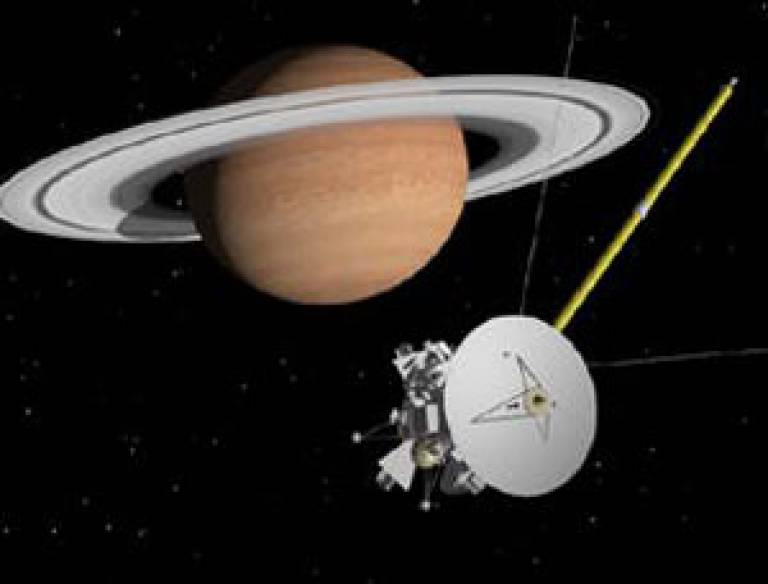Journey into deepest space
13 July 2004
A team at UCL's Mullard Space Science Laboratory (MSSL) has created one of the instruments used in the Cassini-Huygens spacecraft currently orbiting Saturn.

The Cassini-Huygens mission, named after the 17th century astronomers Jean Dominique Cassini and Christiaan Huygens, set off from earth seven years ago, with the aim of reaching Saturn by 2004. It is the first spacecraft to orbit Saturn and is one of the most ambitious missions ever launched, representing the collaborative efforts of 260 scientists in 17 countries.
One of the three sensors used in the Cassini Plasma Spectrometer instrument is the 'electron spectrometer', built at MSSL in collaboration with researchers at Rutherford Appleton Laboratory (RAL) and Forsvarets Forskningsinstitutt, Norway. The spectrometer measures the amount of charged particles in the interplanetary medium and, in combination with other instruments onboard, will map the interaction of the solar wind with Saturn, its magnetosphere and moons. This will help to shed light on issues such as the chemistry and dynamics of Saturn's largest moon, Titan, and the formation of spokes in the planet's famous rings.
Dr Andrew Coates, the team leader at MSSL, said: "Ever since Voyager provided the first enticing close-ups of Saturn, as it flew past in 1980, the scientific community worldwide has been keen to explore the system further. Now, its dreams are about to be realised. We are privileged to be part of one of the great exploratory missions of our time. The ringed giant planet, its 31 moons and its enormous magnetic field, provide a fascinating laboratory where we can learn more about how the solar system formed and Saturn's complex astrophysical system."
Cassini has 12 instruments which will image the planet, rings and moons at different wavelengths, as well as measuring temperatures, magnetic fields and probing the compositions of dust and charged particles. Aboard the Huygens, six instruments will study the unique atmospheric and geochemical processes thought to occur on Titan, Saturn's largest moon.
MSSL is located in UCL's Department of Space & Climate Physics, and is the UK's largest university space research group. Since its creation in 1966, MSSL has participated in more than 35 satellite missions and 200 rocket experiments. The Cassini-Huygens mission is a joint project between NASA, the European Space Agency and the Italian Space Agency.
Image: Cassini-Huygens spacecraft currently orbiting Saturn.
To find out more about the mission's progress and the MSSL, use the links below.
Links:
Cassini-Huygens mission
UCL Space Plasma and Planetary Physics Group
 Close
Close

